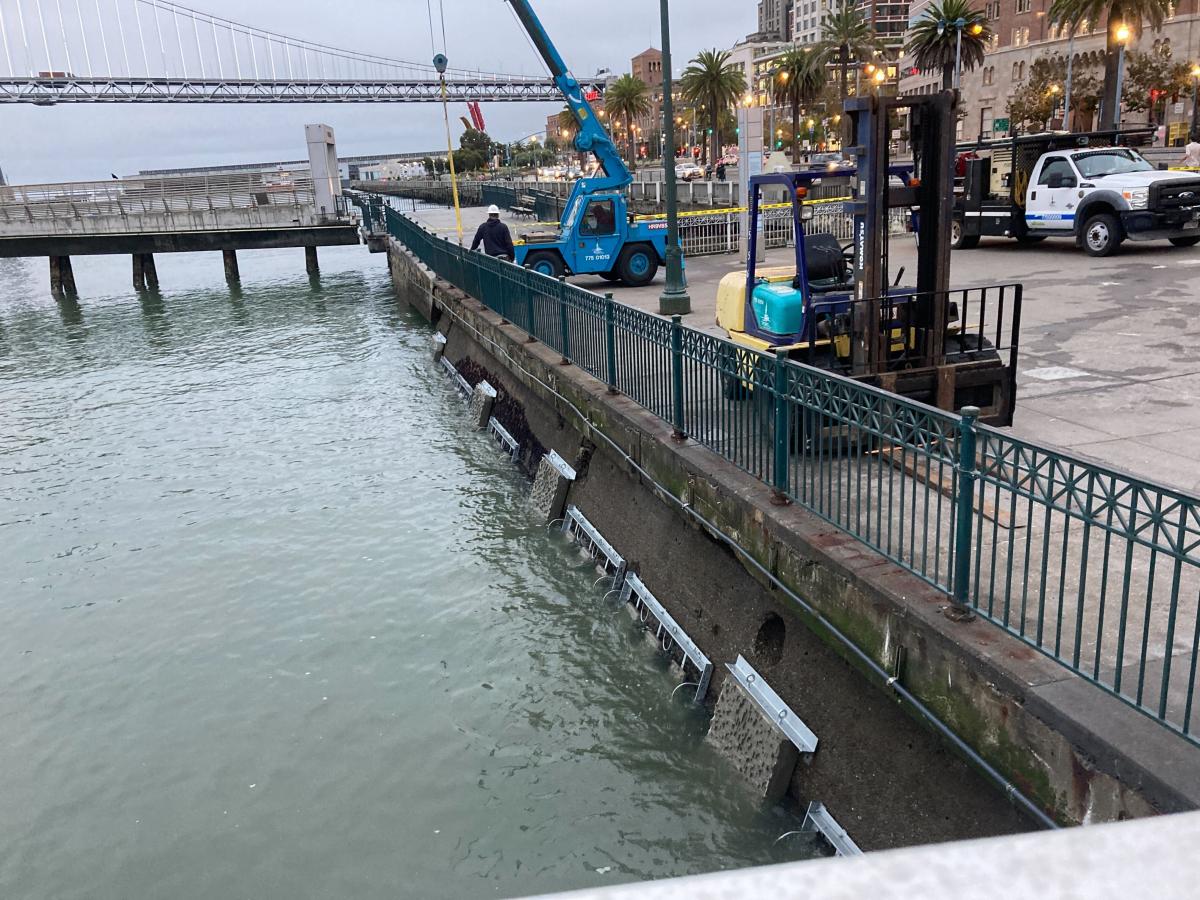by Jaylene Lopez
This article originally appeared in ECO Magazine, for their special November issue on Marine Invasions.

What if there was a way to create a seawall that aided local ecosystems instead of hindering them? This October, the Smithsonian Environmental Research Center (SERC) launched the Living Seawall Pilot Project with the Port of San Francisco. The project aims to test new materials and design for San Francisco seawalls that may promote biodiversity, and create a more harmonious relationship between people and San Francisco Bay’s marine life.
Seawalls are critical urban infrastructures that minimize the effects of flooding and earthquakes. Without the rigid foundation seawalls provide, earthquakes can destabilize the ground, causing flooding, collapsed buildings and cracked roads. The upcoming “Big One” earthquake threatens not only the $100 billion assets in the Bay, but may cause injury to the people who live and work in the area.
In the Bay area, emergency response programs and public transportation like the ferries, BART and MUNI rail systems all depend on seawalls. They also add about 500 acres of new land to the San Francisco shoreline.
Meanwhile, the existing San Francisco seawall is overdue for repair. Large sections are susceptible to damage. Rising sea levels make the renovation even more urgent—water damage deteriorates the walls, and this wall is already overtopped during extreme high tides.
